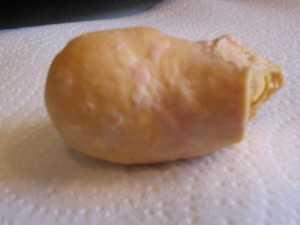- Dec 5, 2010
- 821
- 48
- 133
Quote:
Not necessarily genetic sensitivity to a feed toxin may be in only those hatchery birds, but on a different diet they might be fine. This matters if the toxin causes sporadic problems in a wider subset of birds (in which case the hatchery birds might be acting like coalmine canaries). It maybe seems like splitting hairs but there would be implications down the track for whichever paradigm you use (i.e. 'it's all genetic' vs 'it's partly genetic but there may be unexplained toxin interactions that might matter for future breeding/feeding').
Quote:
...you're talking about built in obsolescence that would mean hatcheries are selecting *for* the gene to develop internal lay after a period of time (whether that comes about because of a genetic susceptibility to something feed related, or some kind of neat genetic fault). Yes, I could believe it. In fact, looked at from a profit perspective, a hatchery would be foolish not to. How terribly cruel and how good for business...
Not necessarily genetic sensitivity to a feed toxin may be in only those hatchery birds, but on a different diet they might be fine. This matters if the toxin causes sporadic problems in a wider subset of birds (in which case the hatchery birds might be acting like coalmine canaries). It maybe seems like splitting hairs but there would be implications down the track for whichever paradigm you use (i.e. 'it's all genetic' vs 'it's partly genetic but there may be unexplained toxin interactions that might matter for future breeding/feeding').
Quote:
...you're talking about built in obsolescence that would mean hatcheries are selecting *for* the gene to develop internal lay after a period of time (whether that comes about because of a genetic susceptibility to something feed related, or some kind of neat genetic fault). Yes, I could believe it. In fact, looked at from a profit perspective, a hatchery would be foolish not to. How terribly cruel and how good for business...



